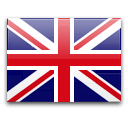
Hierarchy Of Controls In The Workplace
Safety in the workplace is becoming increasingly important in Australia. When your workplace adopts a safe and healthy space for your employees, this can help to lower staff absenteeism, turnover and injury. As a result, the workplace can benefit from higher employee morale, productivity and output quality. You may also experience reduced staff costs due to lower injury and illness levels.
So, based on this focus of improved safety, how can you determine what the best safety measure is? It’s important that this is assessed based on the type of risk that has been identified. Using Hierarchy of Control is a uniform way of controlling health and/or safety risk that has been raised.

What does Hierarchy of Control mean?
A Hierarchy of Control is essentially a uniformed system that provides you with controlled measures for risks that have been recognised in the workplace. This can be applied to any risk that has been identified.
This method works because it provides you with a step by step approach towards eliminating (or greatly reducing) the identified risk. It allows you to assess and rank the risk control from the highest level of protection, all the way down to the lowest (and least reliable) form of protection for your employees.
The aim of controlled measures is to completely eliminate the risk. However, where this cannot be achieved, then steps must be taken to ensure that the risk has been reduced as much as possible, with reliable protection put in place. This is done by working down through the other alternatives provided in the hierarchy.
What is the Hierarchy of Control Structure?
This hierarchy of control structure is measured on:
- The level of Health and Safety Protection (highest level to lowest level) versus
- The reliability of the control measures (most reliable to least reliable)

Under the Occupational Health and Safety Act (OHS), all employers have a duty of care to ensure their workplaces are safe, as far as reasonably practicable. The Hierarchy of Control assists employers to eliminate identified risks; and where elimination cannot be achieved, you must work through the control structure until that risk can be most effectively reduced. It’s important to consult with your employees (and their representatives, if any) when deciding on appropriate risk controls.
As you can see, this is a standard way to ensure that risks can be eliminated or controlled. Essentially, the hierarchy is arranged starting with the most effective control, and continues down to the least effective.
Measurement of Hierarchy
Taking a look at the main levels of the hierarchy, this can be worked through from top to bottom based on the level of effectiveness:
Level 1: Eliminate the Hazard
The most effective control of an identified hazard is to completely eliminate that risk. This will provide your workers with the highest level of protection.
Where possible, the best way is to ensure the risk is not introduced in the first place. In other words, taking the appropriate care and planning in the designing stage is much cheaper and practical, then trying to eliminate it after the fact.
Where it is not possible to eliminate the risk, then it’s important to eliminate as many risks associated with that hazard as possible.
An example of elimination would be removing trip hazards from the floor.
Level 2: Reduce the Hazard
When complete elimination cannot be achieved, then the next step is to work towards reducing the risk. This can be achieved in one of three ways:
- Substitute the hazard with something safer.
- Isolate the hazard from people (including workers and visitors).
- Reducing the risk through engineering changes and controls.
An example of this is replacing solvent-based paints with water-based ones.
Level 3: Low Level Hazard Protection
This is the least reliable method of controlling hazards, and should only be used as an acceptable method when the previous two levels can not be adopted for the identified risk. This level of hazard protection can be achieved in one of two ways:
- Administrative controls to help minimize exposure to the hazard.
- Using Personal Protective Equipment (PPE) to protect workers and visitors from harm.
PPE includes equipment appropriate for your particular workplace. This can involve equipment such as: face masks, harnesses, gloves, ear muffs, goggles, high-vis clothing, respirators, hard hats etc.

Hierarchy of Control Examples
The hazard type, consequence severity and overall risk to employees (and visitors) must be assessed when considering which control should be used. In other words, as the risk of the hazard increases, so too should the control method. For example:
- Elimination: completely remove the hazard
- Substitution: change out chemicals, use less noise-creating equipment, use remote controls etc.
- Engineering: Installing guard rails, using machinery to move heavy loads, safety mats etc.
- Administrative: Creating procedures and safety training, using signs and alarms etc.
- PPE: any protection worn by employees (and visitors) to protect from a hazard.
Let’s take a look at some more specific Hierarchy of Control examples to help demonstrate this in action.

These are completely hypothetical situations and should not be used to implement your safety activities, policies or procedures. The purpose of these examples are to demonstrate how the same hazard can be assessed and managed based on the different levels within a hierarchy of control framework. If any of these examples apply to your workplace, you should seek your own specialist expert advice to ensure the measures meet your particular requirements.
Hierarchy of Control Examples Childcare
This hypothetical example is of a potential hazard identified for a piece of playground equipment that a childcare center is considering installing.
When considering installation for a particular piece of playground equipment, a hazard was identified where children could potentially fall from the equipment height. Working through the Hierarchy of Control levels it could look like this:
- Level 1 - Eliminate: to eliminate this risk would be to remove (or not install) that particular playground equipment.
- Level 2 - Engineering: risk can be minimised by installing railings to help protect children from falling over the edge of the equipment.
- Level 3 - PPE: would be for the children to use knee pads and helmets when using the equipment.
Here you can see there are varying levels of practicality with each level. You could completely eliminate the risk by not installing the equipment in the first place. Or you could mitigate the risk by installing railing for protection. In this instance, having children wear safety equipment when using the playground equipment would not be practical, so implementing Level 1 or Level 2 may be more effective in managing this identified hazard.
Hierarchy of Controls in Construction
A common hazard to consider when working in construction is using scaffolding for the purposes of installing insulation to the building. The hazard here is that workers will be working at height, i.e. there is a risk of falling from the scaffolding. This can result in death or injury. An example of assessing Hierarchy of Controls in construction for this identified hazard could include:
- Level 1 - Eliminate: Using insulating bricks instead to remove the need to install insulation.
- Level 2 - Substitute: Replace scaffolding with mast-type risers which are a less-risky option.
- Level 2 - Engineering: Installation of safety nets, guard rails. Also limiting the exposed ground area to help reduce the risk when working at higher altitude.
- Level 3 - Administrative: Provide workers with safety training on working with heights, and the specific equipment being used.
Hierarchy of Controls - Manual Handling
Hierarchy of Control in Manual Handling is used to avoid hazardous manual handling operations, or reduce the risk of injury as a result of manual handling (where reasonably practical). Examples of this could include:
- Level 1 - Eliminate: Place tools, materials and equipment at chest-height to avoid the need for workers to carry, bend, twist, reach or push pull.
- Level 2 - Substitute: Change the objects being used in the task to help ease grip, and minimise weight and awkward positions etc. For example, reducing packaging sizes or using appropriate handles and balancers.
- Level 2 - Engineering: Providing mechanical aids such as: wheels, harnesses, hoists, trolleys, or conveyors.
- Level 4 - Administrative Controls: Installing signs around weights of loads. Providing training that helps workers identify manual handling hazards and using protective postures.

Working at Height Hierarchy of Control
When working with heights in the workplace, it is good business practice to install risk control measures such as guardrails and specific walkways to ensure that workers can do their job safely. As a secondary measure, using fall prevention systems can also be adopted.
An example of Hierarchy of Control for working with heights might include:
- Level 1 - Eliminate: Work on the ground or using solid construction (such as permanent non-slip surfaces, scaffolding, stairways etc.).
- Level 2 - Engineering: Using fall protection devices, where once installed, do not need to be altered. This includes equipment such as mobile scaffolds, guardrails, scissor lifts etc.
- Level 3 - PPE/Administration: Having workers use safeguards when completing their duties at height. Examples include using roof anchors, static lines, harnesses etc. Safety training must be administered to ensure workers are able to maintain and use this safety equipment correctly.
Whilst these are all hypothetical scenarios and should not be used as a policy or procedure in your workplace without advice from an expert, hopefully these examples illustrate how Hierarchy of Control is applied to one particular hazard, to develop alternative safety measures with varying levels of protection and reliability.
Using Hierarchy of Control in your Workplace
Hierarchy of Control can be easily implemented into your workplace by using the Take 5 Safety Booklets. The Take 5 Safety books are used to:
- Identify any hazards in the workplace
- Assess the level of risk, and
- Control that hazard
The Hierarchy Control Structure discussed above is conveniently placed at the back of the booklet for quick reference.
As a leading supplier of safety books in Australia, UniPrint’s Take 5 Booklets are easy to use, portable and durable for any workplace. Our safety books can also be custom-designed to meet any exact safety needs of your particular workplace.










